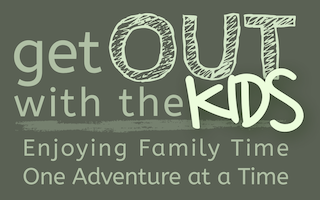Making the most of Bushcraft
Posted by John Traynor.First Published Nov 2017; updated May 2023.
John Traynor says there's more to bushcraft than TV shows, and it's easy to enjoy another side of family life outdoors.
The key to bushcraft is having fun learning more about the countryside, and it's a great way for families to share life outdoors learning how to tackle tasks and make things that our ancestors took for granted.

On a bushcraft experience in Northumberland a few years ago, Rob Caton demonstrates how to start a campfire using flint, steel and tinder to a fascinated audience.
It's not all about having to learn skills to avoid trouble but more about adding extra dimensions of enjoyment to being outdoors.
Sharing those skills, however poor, is an essential part of the fun. In a remote part of the Scottish Highlands, I once spent several hours with my young son building a fish trap in a loch from stones.
It was actually a reservoir. By the morning, the trap lay bare in the sunshine as water had been released overnight, leaving it high and dry.
Wikipedia defines bushcraft as being '.. about surviving and thriving in the natural environment, and the acquisition of ancient skills and knowledge to do so. Bushcraft skills include; firecraft, tracking, hunting, fishing, shelter building, the use of tools such as knives and axes, foraging, hand-carving wood, container construction from natural materials, rope and twine-making, and many others.'

Another take on bush babies; modern tipi tent and tarp life in the heart of the woods at a secret site in Northumberland.
Foraging for wild food is something many of us would regard as normal; at its most basic, it's blackberry picking.
With knowledge and experience, it's possible to prepare a full meal, especially by the coast, plus dressing and seasoning, all from the wild.
Getting a fire started by friction or flint, firesteel and tinder is a challenge and a delight when it works. With a little skill, it hurts nobody and does no damage only connecting us with a very basic need for heat and light.
Building dens is a childhood game that starts at home under tables and, if you're lucky, ends up in woodland.
There's something very simple and satisfying about using your hands and maybe just a couple of tools, to use natural materials for a shelter that will turn wind and rain.

Making tools from natural materials.
Woodcraft is often used as an alternative term for the whole range of bushcraft skills and awareness of what is happening around you in the natural environment.
More specifically, it has been used to make useful items from raw materials.
Fashioning simple items from fallen wood, such as small tables, backrests, boot, plate and mug racks, is an aspect that has more or less died out not least because it's hard to find places to camp that have natural resources to use.
Making usable bowls, cups and spoons from wood can, at its simplest, take a few minutes with a knife or many hours with specialist tools.

Campfire cooking over an open fire needs different skills and recipes.
In practical terms, tracking is one of the least useful aspects of bushcraft and also one of the most enjoyable.
Frustrating at times, there is so much to learn that nobody can ever say they know it all.
After picking up a few skills on a course, it can offer plenty of fun, especially when combined with navigating by compass. Think about it and make up your own outdoor skill games.

Beaming smiles and a shared sense of achievement after the fun of building a forest shelter from natural materials.
Knife safety
- Always cut away from yourself.
- If you drop a knife, don't try to catch it; let it fall to the ground.
- Don't throw a knife to anyone wanting to use it; put it down to be picked up by the other person.
- Keep your knife folded or sheathed when not in use.
- Keep your knife sharp; a sharp knife is much safer than a blunt knife as it can be used more surely and with less force.
- Never run holding a knife.

